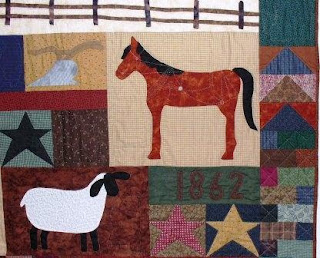As you all know, Homestead National Monument of America (HOME) does a lot of things that are easily visible to the public. First and foremost the rangers at the park interpret the significance of the Homestead Act and its influence on the shaping of this country to public through exhibits, tours, and presentations. There is also the preservation of the restored tall grass prairie, preservation of the historic Palmer-Epard cabin and Freeman School, and the many special events organized by the monument. But one of the most important, and least visible, projects that HOME is working on is the Homestead Land Records Project which is now in its tenth year.
Paul Abbott (standing) with FamilySearch, instructs volunteers Don and Marilyn Vickers on the use of the dCamX camera at the National Archives and Records Administration.
The entire collection of federal homestead records contains an estimated 30 million archival documents. All of these records are currently stored at the National Archives and Records Administration (NARA) in Washington, D.C. The records exist only in their original paper form. They are printed on acid-based paper and stored in their original acid-based paper envelopes. As are all original documents, they are subject to natural deterioration as well as the dangers of fire and water damage. The records are available to the public but are organized in such a manner than a researcher must know the legal land description of the homestead they wishes to see. No name index to this collection currently exists and due to the size of the collection NARA had no plan in place to microfilm or digitize the collection.
The Homestead Records Project has evolved over time. The first incarnation of the project involved a plan for the acquisition of the homestead records by HOME from NARA. It was determined that this would not be feasible due to the amount of climate controlled space the documents would require and the fragility of the documents themselves. Next, it was decided that records would be microfilmed and made available for public access and research at HOME. This stage included the completion of a pilot project in 2006 in which approximately 60,000 documents from the Broken Bow, Nebraska US Land Office were microfilmed and made available for research at HOME. As plans for microfilming another Nebraska land office’s records were being worked out it was decided that digitization technology had reached a stage where it was a viable access and preservation alternative. The current stage in the projects involves the digitizing of the land records and making them available online. The Broken Bow, Nebraska land office records were digitized first since the process is easier to digitize microfilm than it is to digitize fragile paper documents. A pilot project began in 2009 to begin photographing over 300,000 documents from the Nebraska City/Lincoln US Land Office. As of the writing of this blog article this pilot project is 40% complete with an expected completion date sometime in July, 2010.
It should be made very clear that this project could never have moved forward to the point where it is now without the partnerships of several other organizations. From the very early stages of the project the University of Nebraska’s Center for Digital Research in the Humanities has been involved with the planning and implementation of the pilot projects and continues to be a valuable partner in this endeavor. Volunteers from FamilySearch are currently in the NARA collections center tirelessly photographing the documents from the Nebraska City/Lincoln US Land Office. After a group of images is indexed it is sent to Footnote.com to be made available on their website. And, of course, the partnership with NARA allows for access to the collections and workspace in which to photograph the documents. In the coming years HOME, along with these valued partners, hope to digitize the remaining homesteading records from Nebraska and other states. These records will be uploaded to Footnote.com as they become available.
Historians, amateur genealogists, and the public have free access to this database through computer terminals in the lobby of the Heritage Center at HOME. This access will also be available at NARA, FamilySearch’s Family History Centers, and the University of Nebraska-Lincoln. Access to the records can also be obtained through Footnote.com by subscription.

+with+FamilySearch,+instructs+volunteers+Don+and+Marilyn+Vickers+on+the+use+of+the+dCamX+camera+at+the+National+Archives+and+Records+Administration+web.jpg)










